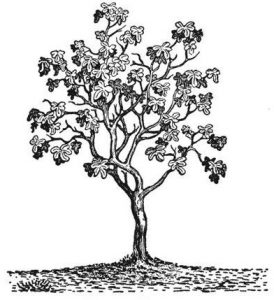 The Bell Jar is the first and only novel written by renowned poet Sylvia Plath, who in February of 1963, barely a month after its publication, cranked the gas on her stove and placed her head inside. She died at only thirty years old and left behind two children, aged two and one at the time. The novel follows protagonist Esther Greenwood, an intelligent and successful nineteen year old college student, as she begins to lose touch with reality and descend into a psychotic-depressive episode. It is semi-autobiographical.
The Bell Jar is the first and only novel written by renowned poet Sylvia Plath, who in February of 1963, barely a month after its publication, cranked the gas on her stove and placed her head inside. She died at only thirty years old and left behind two children, aged two and one at the time. The novel follows protagonist Esther Greenwood, an intelligent and successful nineteen year old college student, as she begins to lose touch with reality and descend into a psychotic-depressive episode. It is semi-autobiographical.
I have read through the first ten of twenty chapters, and one major theme I have noticed is the issue of choice. Esther is a young woman with her whole life ahead of her. For someone with the talent and privilege that she has, this should be energizing. However, Esther is paralyzed by the possibilities. She explains it well in the following passage:
“I saw my life branching out before me like the green fig tree in the story.
 From the tip of every branch, like a fat purple fig, a wonderful future beckoned and winked. One fig was a husband and a happy home and children, and another fig was a famous poet and another fig was a brilliant professor, and another fig was Ee Gee, the amazing editor, and another fig was Europe and Africa and South America, and another fig was Constantin and Socrates and Attila and a pack of other lovers with queer names and offbeat professions, and another fig was an Olympic lady crew champion, and beyond and above these figs were many more figs I couldn’t quite make out.
From the tip of every branch, like a fat purple fig, a wonderful future beckoned and winked. One fig was a husband and a happy home and children, and another fig was a famous poet and another fig was a brilliant professor, and another fig was Ee Gee, the amazing editor, and another fig was Europe and Africa and South America, and another fig was Constantin and Socrates and Attila and a pack of other lovers with queer names and offbeat professions, and another fig was an Olympic lady crew champion, and beyond and above these figs were many more figs I couldn’t quite make out.
I saw myself sitting in the crotch of this fig tree, starving to death, just because I couldn’t make up my mind which of the figs I would choose. I wanted each and every one of them, but choosing one meant losing all the rest, and, as I sat there, unable to decide, the figs began to wrinkle and go black, and, one by one, they plopped to the ground at my feet.”
Throughout the first half of the book, Esther is pulled in many different directions and never moves. For the first half of the novel she is working as a guest editor on a fashion magazine with a cohort of other college women. She attempts to relate to her friend Doreen by going out on double dates with her, but ends up feeling like a passive observer in the activities rather than an active participant. At the same time, she fails to relate to her more “innocent” friend Betsy. On separate instances she privately renounces each of them in favor of the other. She feels pressured by those around her to get married, or at least to seek marriage, and she considers it many times but repeatedly concludes that she will never have a husband. When her boyfriend Buddy proposes to her, she tells him no, saying “If neurotic is wanting two mutually exclusive things at one and the same time, then I’m neurotic as hell. I’ll be flying back and forth between one mutually exclusive thing and another for the rest of my days.”
At the same time, it is not only the neuroticism that causes Esther’s paralysis. As time goes on, she is gripped by a feeling of “unreality” which causes her to behave in erratic ways. One night, after she is the victim of an attempted date rape, she climbs to the roof of her hotel and throws every item of clothing that she owns from it. The next day she rides the train home without ever wiping her attacker’s blood from her face, and yet wonders why she receives odd looks. When she is rejected from the writing course she had intended to take over the summer, she is encouraged to take a different class and go to the city anyway, and while in her mind she agrees, she hears her own voice tell her would-be roommate to give the room to somebody else. She contemplates the myriad of ways she could spend her summer and vaguely decides to spend it writing a novel, but she soon loses the ability to write, read, or even sleep. She spends three weeks in bed without bathing or changing her clothes. All access to choice seems to have been lost, the figs all rotted. At the end of chapter ten she goes to her doctor to receive a prescription for sleeping pills, and is instead referred to a psychiatrist.
The novel is told in the first-person past-tense, and in the first chapter Esther lets the reader know that she is now married and a mother. Presumably, she will regain her sanity by the end of the book. I am particularly interested to learn who she marries and what leads her to make this choice despite her initial adamance that she never would. Why that fig?